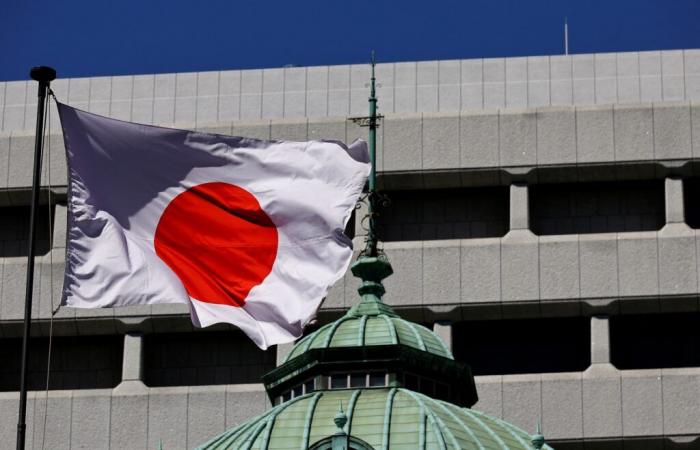Japan’s bank type up cycle faces its greatest evidence since Governor Kazuo Ueda took command two years ago, since the tariffs of US President Donald Trump are quickly reducing the margin for new increases in financing costs, which remain low.
After the decision of the Bank of Japan on Thursday to maintain interest rates in 0.5 %, UDA said that the moment when the underlying inflation will converge towards the 2 % objective of the central bank has “delayed something”, which essentially represents a break in the types of types to have more clarity on the consequences of the increase in tariffs.
However, the persistent food inflation, the perspectives of sustained salary increases and the fears of new falls of the Yen can mean that the Bank of Japan has many reasons not to completely abandon its types for types of types.
This delicate balance is likely to make the Bank of Japan continue to insinuate that its next movement will be a rise, but leaving markets with uncertainty about the rhythm and time of future measures.
“The worst scenario for the Bank of Japan is to end up more delaying the achievement of inflation of 2 % by proceeding to raise the types in a context of great uncertainty,” said Akira Otani, former chief economist of the Bank of Japan and current general director of Goldman Sachs Japan.
“Therefore, it is best to postpone types of types as a precautionary measure,” said Otani, who delayed six months, until January, the estimated date for the next type rise.
Goldman is still waiting for the Bank of Japan to end up raising its official interest rate up to 1.5 % in the current cycle of types of types.
At first glance, the threat of World Trade War for the Japanese economy, so dependent on exports, could be sufficient to abandon its bullish bias and adopt a more neutral monetary posture.
According to the new forecasts published on Thursday, the Bank of Japan expects the economy to barely grow above its potential this year. He has also reduced his inflation forecasts and considers that the risks are inclined downward, indicating that his conviction about prices dynamics is declining.
Ueda warned of “extremely high uncertainty” on perspectives, although he underlined the determination of the Bank of Japan to continue raising interest rates, since he considers that the underlying inflation will accelerate again towards his objective, after a brief period of stagnation.
History has demonstrated the difficulty of normalizing Japan’s ultra -expansive monetary policy. The country has not seen short -term types of more than 0.5 % in three decades, and attempts to rise them have been repeatedly hindered by the stagnation of the growth of wages and external disturbances.
Is this time this time?
However, this time, a pause too long has a cost.
Unlike what happened in the past, when Japan was mired in deflation, underlying inflation has exceeded the 2 % objective of the Japan bank for three years, since the costs of raw materials, which remain high, push companies to raise prices.
The contraction of the active population has also kept companies under pressure to raise salaries and collect more for services, a trend that, according to Ueda, will continue and maintain inflation in a moderately upward trend.
The constant increases in food prices, including the increase in the cost of rice, a basic product, promoted general inflation to 3.6 % in March, which caused complaints from homes and politicians.
“We must pay attention to the possibility that the recent rise in food prices can cause side effects in underlying inflation,” said the Bank of Japan in a quarterly report published on Thursday, in which it warned for the first time the risk that food inflation becomes a more generalized and lasting price increase.
Ueda described the persistent food inflation since the middle of last year as something that took him by surprise.
To be too moderate about the perspectives of interest rates would cause new falls of the YEN, which would increase the inflationary pressure and could arouse the anger of Trump, who has accused Japan of intentionally weakening the Yen to give commercial advantage to its exports.
The YEN fell to 1.1 % to 144.74 per dollar on Thursday, its lowest level since April 10, after the gloomy forecasts of the Bank of Japan increased the expectations that it will take longer than expected to raise the types again.
Morgan Stanley analysts, who initially anticipated the next type rise in September, now expect the types to be maintained at 0.5 % until the end of next year. However, they consider that a rise in September is a risk scenario that could materialize if internal inflationary pressures increase or if the YEN weakens considerably.
«If Yen falls significantly while developing commercial negotiations in Japan, the United States could consider these measures as a problem. A weak yen could not only boost inflation, but also increase government pressure on the Bank of Japan, ”they wrote in a research note.
“If so, and if uncertainty decreases on US tariffs, there is the possibility that the Bank of Japan rises interest rates within a rather short period.”






